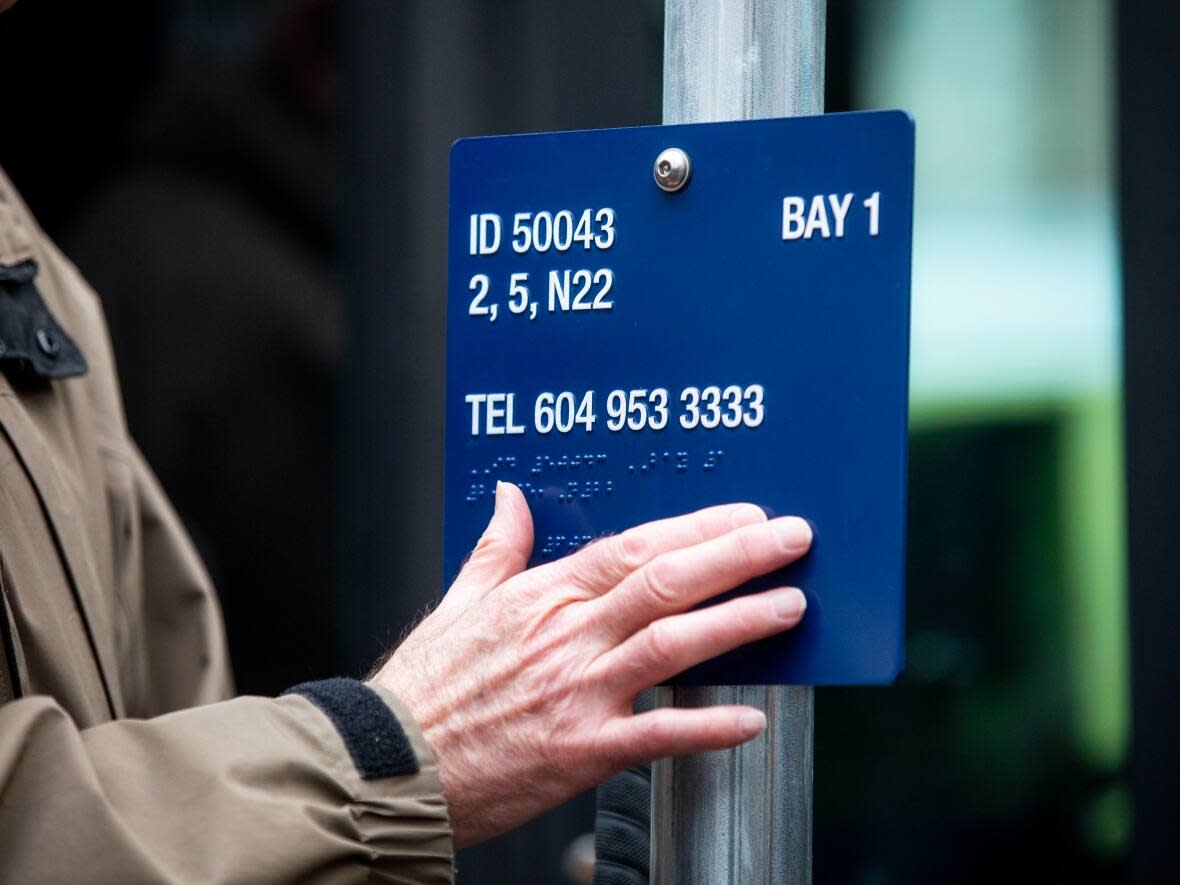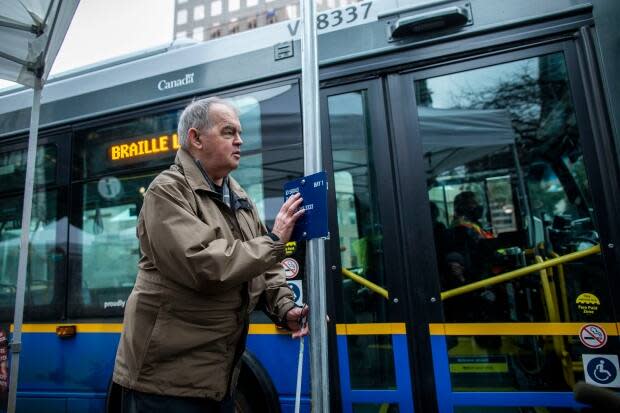TransLink to pilot coded decals at bus stops for blind riders

Commuters using TransLink began seeing coded decals in two Lower Mainland municipalities — New Westminster and Vancouver — on Monday.
The company announced the decals, which resemble QR codes, are part of the Accessible Navigation Project set to launch at three locations in late February to help riders with sight loss, though no specific date has yet been confirmed.
In a statement, TransLink says the pilot project will be testing an accessibility tool that can better help riders navigate the transit system on their own using their smartphones.
When the project launches next month, customers will be able to download the NaviLens app through the Apple Store or Google Play to scan the coded decals.
The codes can be scanned from up to 14 metres away, in light conditions, while the user is moving; no focus will be required to scan the decal.
Once scanned, audio instructions will be provided to guide people to bus stops and points of pick-up.
Ten NaviLens codes will be set up at New Westminster SkyTrain Station bus bays, four at bus stops near the Canadian National Institute for the Bind office in New Westminster, and two at bus stops near the Vancouver Community College (VCC) campus on East Broadway in Vancouver.

The app will also point out other amenities nearby, such as elevators, and real-time information alerts, according to the transportation authority.
To make transit more accessible for riders who are blind or partially sighted, TransLink began to install braille signage and tactile walking surfaces at around 8,400 bus stops throughout Metro Vancouver in 2021.
Advocate says bus stop locations are well chosen
Betty Nobel, spokesperson for Alliance for Equality of Blind Canadians, is applauding TransLink for taking this initiative.
She says she uses the braille signs at the bus stops and they've made a difference for her in finding the correct one she needs.
"There are folks who are blind or partially sighted who don't read braille, so I really appreciate the fact that TransLink is looking at other ways of identifying bus stops," Nobel said.
She adds the bus stop locations that will have the labels for this pilot are well chosen because they are located close to the Canadian National Institute for the Blind in New Westminster and VCC, where there is a program for people who are visually impaired.
She says she will be downloading the NaviLens app and testing it out herself.
"It will be really interesting for me to hear what the audio directions are and how easily navigable this whole thing will be," she said.
Technology to create 'more inclusive' transit: CEO
"By bringing this advanced wayfinding technology to Canada for the first time, we're aiming to create a more inclusive experience and empower our riders to navigate the transit system with ease and safety," TransLink CEO Kevin Quinn said in a statement.
The transportation authority says a similar system is being used in other cities to help people with sight loss at transit locations and shopping centres, including New York City, Madrid and Liverpool.
"Implementing this test technology shows TransLink is working to ensure its customers with sight loss can travel independently and confidently," Access for Sight-Impaired Consumers President Rob Sleath said.
TransLink says the project will run until August this year, after which a public report will be issued.


